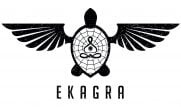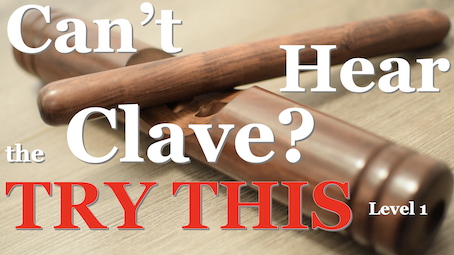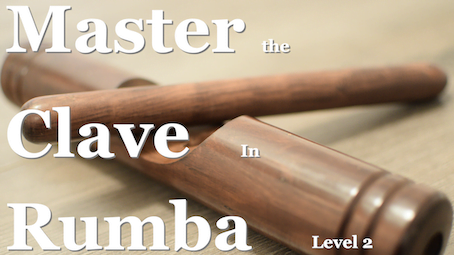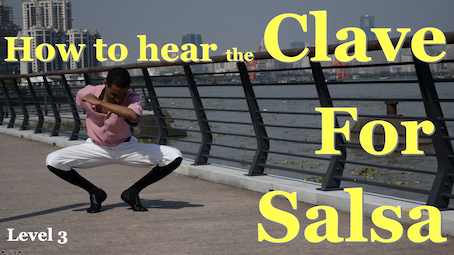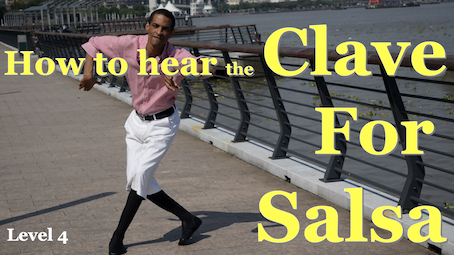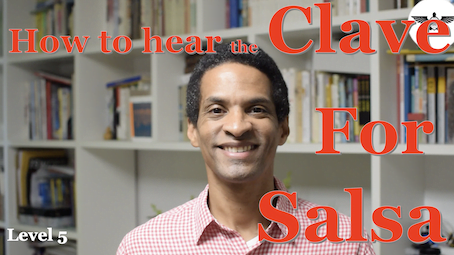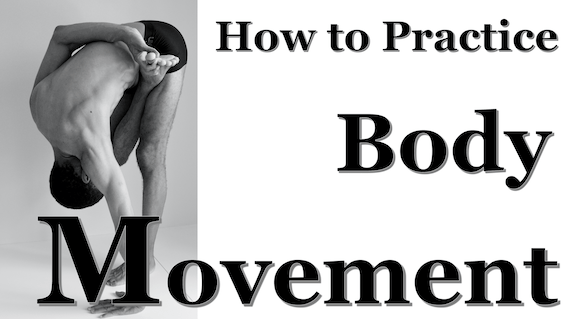Musicality: Step-by-Step Guide
Level 1
Recognising the clave in salsa is one of the most challenging tasks for salsa dancers. Yet very few videos or posts explain how to recognise the clave.
In order to change that I will provide you with a complete step-by-step guide into how to master the clave salsa in 5-levels. THIS IS THE FIRST ONE.
In order to identify where the clave is in a salsa song you must have a method. Just like for driving a car, you don’t go from novice to expert in one go. Therefore, I have devised a 5-level musical hearing program that takes you from complete beginner all the way to full independence in an organised and structured way. And the best way to recognise the clave salsa is…to listen to Cuban rumba first and foremost. You read right. Indeed, Cuban rumba is one of the music styles that uses the clave as its main instruments.
Level 2
The second level of our clave salsa musical hearing program still focuses on rumba. But this time we add the drum. The speed changes to be a little faster than the previous level. And the objective is for you to recognise the clave on different musical variation, since the tempo of a song is generally one of the reason why students quickly lose the beat.
You might be tempted to think this is a waste of time. But if I am giving you the secret now its because this is the fastest way for you to develop good hearing for the clave salsa.
Level 3
This third level should take us away from the rumba songs we listened to in the first two videos. By now you should be able to understand how the clave in rumba help tremendously for clave in salsa. If you listen to a song such as Gilles Peterson presents Havana Cultura: New Cuba Sound , you can see how the song departs from the street rumba of the first levels, to be more studio based.
In this level, the clave is still present and perceptible, and the rhythm is generally loopy (same type of rhythm over and over). You should be able to integrate simple salsa steps (such as the ones in this video) into these kinds of songs. However, your key objective is to listen and find the pattern of the clave.
Level 4
In the previous levels we listened to cuban rumba as a way to train our ears to recognise the clave. This is THE best way to really absorb the clave, especially if you want to dance salsa. In this level, we listen to salsa music. Ideally, we choose a slower pace salsa without too many changes in rhythm.
In the example I provide, you can hear the clave at the beginning, but as instruments kick in, it becomes harder to spot where it is. One thing to remember is that the clave itself is pretty simple and repetitive. It’s a bit like a factory worker whose only task is to punch holes in a steel material. It does not matter, what other people in the factory do, or the level of noise around you, your only job is to punch holes. Similarly, with the clave you do not let yourself get distracted by other instruments, but only play it over and over. Once you are proficient in doing this, only then can you veer to other instruments.
Level 5
By now you should be comfortable putting clave salsa into anything. Still some songs don’t seem to have it, or it quickly fades away. What should you do in those cases? If you spent the time on the previous levels, especially the 1 to 3, you will be able to develop a “feel” for the clave.
By now your ears are well trained and believe it or not they can perceive the rhythm of a song. Of course, if you went straight to this level 5 and disregarded the previous ones, you will struggle.
Work Your Body
The essential you need
Body movement
In this video we explore body isolation as an integral part of body movement. From head to toe we work on all these parts of our body in isolation from one another. This routine body movement pertains specifically to afro-Cuban dances. But it can be used by other dancers as well as people engaging in physical activities, as it’s a great way to bring heat to your body in a functional way and avoid injuries. I have done this routine for more than ten years and it has served me well. It will help with your body flexibility as well.
Why body movement/isolation?
Ever played with a modelling material? The more you shape it, the more it seems to offer endless shapeable opportunities. Indeed, your body is a bit like plasticine. It can be modelled and shaped the way you want it as long as you have softened it and rendered it loose beforehand. This part tends to be neglected by dancers who believe fancy steps are the hardest thing, when in reality it’s obtaining a flexible body you can play at will with that is difficult. Once your body is malleable you can make it do anything. But to get a flexible body you must have a harden attitude toward practicing constantly. That’s duality of life at its best.
